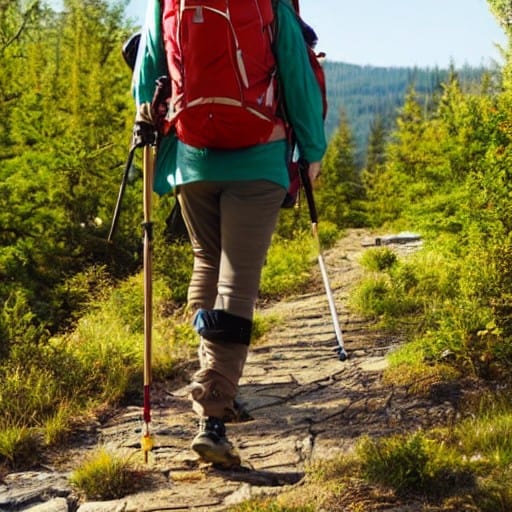Table of Contents
Some links on posts are affiliate links and will earn us a commission from qualifying purchases
Hiking is a fantastic way to stay healthy, explore the great outdoors, and challenge yourself physically and mentally. Along with appropriate footwear, backpack, and clothing, a reliable pair of hiking poles is crucial for a successful outdoor adventure. Hiking poles, also known as trekking poles, offer stability, support for your joints, and increase the efficiency of your hike. There are various designs and features found in hiking poles, making it challenging to find the perfect one. In this comprehensive guide, we will delve into the world of hiking poles and discuss the various types available on the market, their benefits, and provide recommendations for hikers with different preferences and needs.
Types of Hiking Poles
Foldable
Foldable hiking poles are an excellent option for backpackers and hikers who prioritize weight and packability. They collapse into a compact size, making it easy to stash them away in your backpack when not in use. Some popular foldable hiking pole brands include Black Diamond Distance Z and Leki Micro Vario Carbon.
Benefits:
Lightweight
Highly packable
Great for ultralight backpacking trips
Recommendations:
Best for hikers who prioritize lightweight gear
Not as durable or adjustable as telescoping poles
Telescoping
Telescoping hiking poles are among the most common types available, and they typically extend and contract using a twist-lock or lever-lock mechanism. They offer a greater level of adjustment compared to foldable poles, allowing users to fine-tune the length for personal preference or varying terrain. The Black Diamond Trail Ergo Cork and Leki Corklite are popular telescoping pole models.
Benefits:
Adjustable length for varying terrain and user height
More durable than foldable poles
Wider variety available on the market
Recommendations:
Ideal for day hikes and multi-day trips
For hikers who may use the poles for different activities (hiking, snowshoeing, skiing)
Carbon Fiber
Carbon fiber hiking poles are composed of strong, lightweight material designed for high-performance and durability. They absorb shock better than traditional aluminum poles, reducing strain on your wrists, elbows, and shoulders. Brands such as the Black Diamond Alpine Carbon Cork and the Gossamer Gear LT5 are popular choices among experienced hikers.
Benefits:
Lightweight and strong
Shock-absorbing material
Durable and ideal for rough terrain
Recommendations:
Great for hikers who want a lightweight, high-performance pole
Suitable for experienced hikers tackling challenging terrain
Hiking Pole Features
Grip Types
Different grips are available on hiking poles, each with specific advantages:
Cork: provides a comfortable grip, mold to your hand, and helps with moisture absorption
Foam: soft and comfortable, lightweight, and ideal for warm and wet conditions
Rubber: provides insulation in cold conditions, reduces vibrations, but may lead to sweaty hands in warm environments
Shock Absorbing Mechanisms
Some hiking poles include a built-in shock-absorbing mechanism that reduces the impact on your wrists and arms during your hike:
External: visible springs located externally in the pole, usually heavier and bulkier
Internal: hidden springs located inside the pole’s shaft, lighter, and more streamlined
Locking Mechanisms
Hiking poles employ different locking mechanisms for length adjustment:
Twist-lock: a simple and fast method, but may lose effectiveness over time
Lever-lock: more durable and secure, but may be slightly bulkier
Baskets and Tips
Different baskets and tips are available for various terrains:
Baskets: round or narrow shapes for loose rock, mud or snow
Tips: carbide or steel tips for hard surfaces, rubber tips for paved paths or delicate surfaces
Conclusion – hiking poles buyers guide
There are many factors to consider when choosing the perfect hiking poles for your outdoor adventures. It’s crucial to examine your personal preferences, hiking style, and terrain you plan to explore. By understanding the various types of hiking poles, their features, and benefits, you can make a well-informed decision on selecting the ideal pole for your needs. Whether it’s a lightweight foldable option, a durable telescoping pole, or a high-performance carbon fiber design, you’ll be well-prepared to hit the trails with confidence and comfort.
Recent Posts
I've been wondering about buying some walking poles for a while, but don't really know anyone who uses them. So I've had no-one to ask about them in person and as such had to do my own...
It seems these days that there are more and more people who have tried using walking poles (also known as trekking or hiking poles), and liked them, so they continue to walk with them. So we thought...


